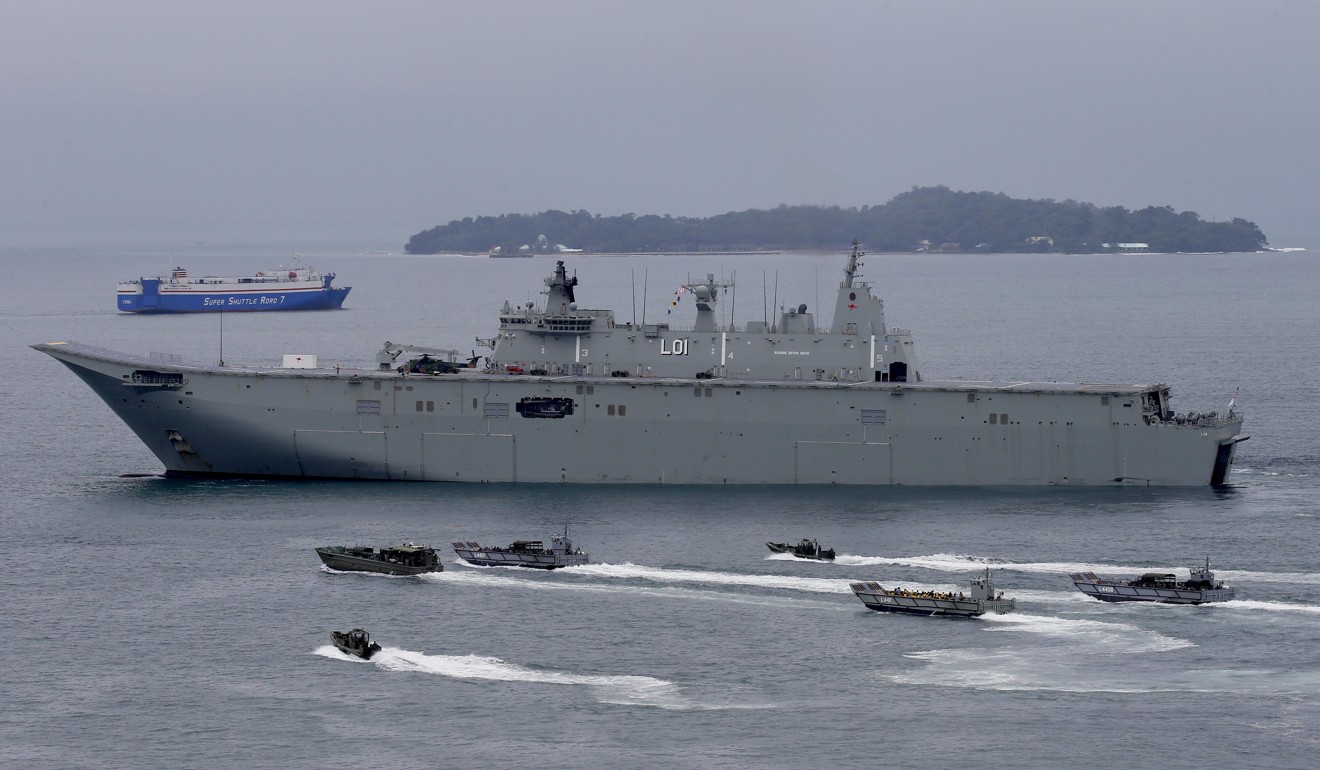
Australia must get used to a new order with China as a major player
Michael Clarke and Matthew Sussex say Australia needs to consider the realities of a new arrangement in which China is a major power, rather than long for a bygone era of uncontested US supremacy. However, the new reality also gives Australia, as a middle power, fresh opportunities
But it does not offer a coherent blueprint for responding to such significant forces of change. Instead, it prefers to loudly trumpet the strength of Australian values and international “rules” in shaping the regional order, with little to explain how this will endure, or how China will be co-opted into adhering to them, given that this has clearly not worked so far.

Australia looks for balance to China’s rising power in Indo-Pacific region
A significant proportion of the American public now openly question the desirability of sustaining American leadership, and the largely bipartisan post-cold-war elite consensus that sustained US primacy has been ruptured. Even counting Trump as an aberration assumes that the political support system of American primacy can be swiftly reconstructed.
Who is America’s worst enemy? It’s not North Korea’s Kim Jong-un
If the US does remain embedded in regional security, the rush to reform the Quad risks overbalancing, clearly signalling to Beijing that US allies seek to contain it. There’s no problem with that as a strategy necessarily, although Australian elites are for some reason reticent about saying so, preferring instead to refer obliquely to “balancing”. That suggests some disagreement about the scope of the China challenge, notwithstanding that white papers are the products of multiple hands.

US, Japan, India, Australia ... Is Quad the first step to an Asian Nato?
In fact, power in the Indo-Pacific, led by the US, is far from balanced – and a containment posture is fundamentally a balancing strategy. The paradox for Australian policymakers is that a more balanced Indo-Pacific is inimical to Australian interests because it inevitably reinforces the sense of choice between Australia’s main security ally (the US) and its major trading partner (China).
So what, if anything, can Australia do? To start with, it should stop conflating values with interests. Values are amorphous and rarely useful as a basis for constructing policy. They are important to justify policy rather to determine its contours.
Beijing outmanoeuvres US in the South China Sea – at least for now
If Australia’s white paper correctly identifies our enduring values as a key strength, they clearly haven’t succeeded in socialising China or persuading it to respect regional rules. While they reinforce domestic comfort during times when regional order is fixed, relying on them in times of geopolitical uncertainty will push Australia to take sides as that order is increasingly challenged.
Wary China on ‘Quad’ bloc watch after officials from US, Japan, India and Australia meet on Asean sidelines
A more sober Australian foreign policy would be far more hard-nosed about its interests. Sometimes these will align with the US, sometimes with China. There is nothing damaging in the medium-term about a “hedge and balance” strategy in which Australia seeks a positive role in various models for regional order led by Beijing, Washington or others.
Let’s assume the white paper correctly characterises the future Indo-Pacific order as multipolar. Multipolar regional systems present great opportunities for middle-sized powers like Australia because they facilitate multi-vector foreign policies: having your cake and eating it too. On those grounds, there is no need to back away from the US alliance as the bedrock of our strategic policy, and every incentive to push back against Chinese probing of Australian alliance loyalty. But there is equally little sense in advocating a rules-based system whose principal architect is questioning whether it should keep leading it.
By failing to grasp these realities, Australia’s foreign policy white paper is a halfway house. It correctly diagnoses the symptoms of regional change, but prescribes an outdated cure. We may come to rue it as a missed opportunity.
Dr Michael Clarke is associate professor at the National Security College, ANU and director of the ANU-Indiana University Pan-Asia Institute. Dr Matthew Sussex is associate professor and academic director at the National Security College, ANU
